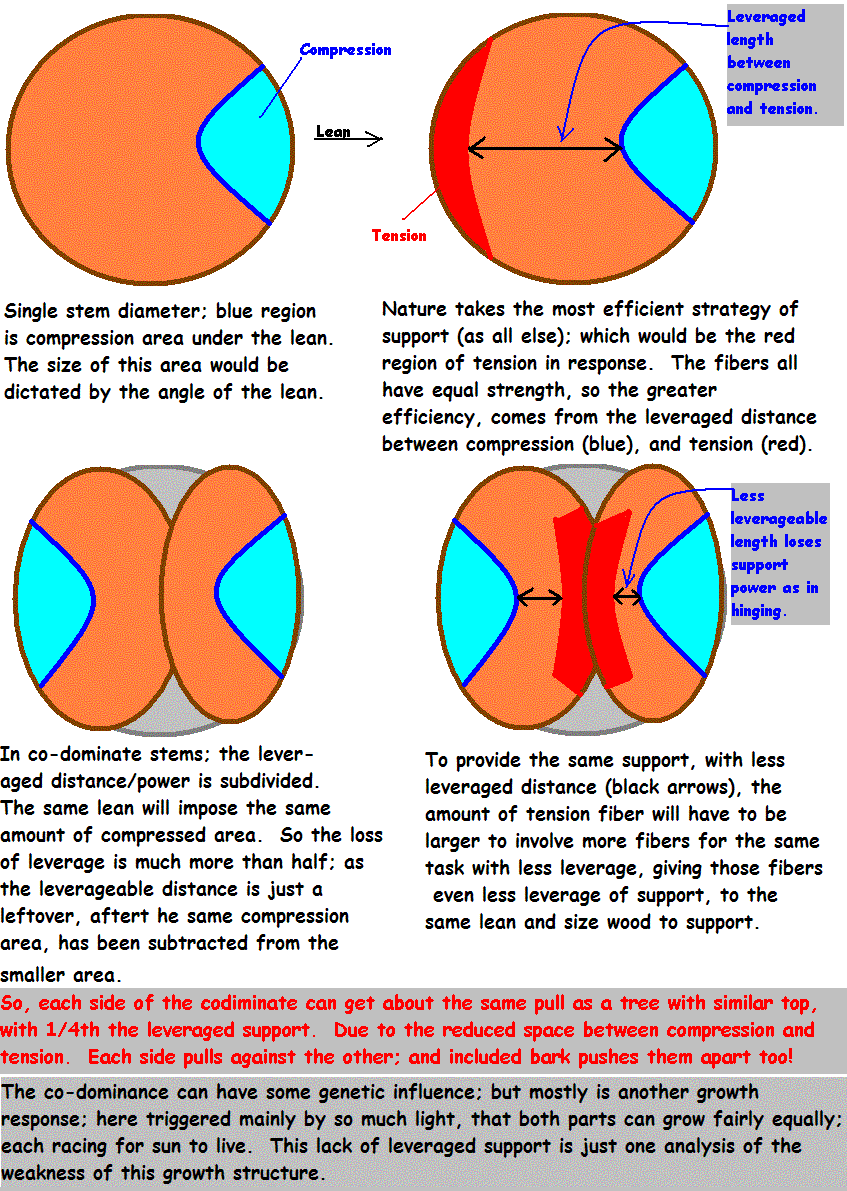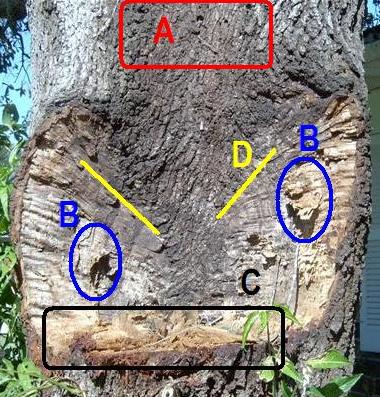Doesn't really matter price wise, safety wise, hauling wise(cant go to dump and say hey this is just 1 tree), cutting wise, weight wise, btu's of heat wise etc. as same work in bulk.
Just as would not matter to co$t of making a chair from the wood of 1 or both trees is logistic i presented(when could w/o aggravating more).
.
But, please, usually more complex risk as chance of shearing on seam, per less leveraged support each, and also to nonRound.
Codom and separate competing twins as likewise competing/not joining other half is a structural fault/weak seam/less than maximum of single dominant ROUND monolith by the very design of a codom (or roots displacing each other under ground). Either way perpetuates a weak seam/not joining together like ball joint or dovetail etc. but slap and glue job(that can peel apart), and not round. Round is geometrically equilateral all the way across for equal leveraged support thru center any angle as Natural maximum, perfect shape. Now Nature may alter round to oval per weight bearing in normal growth is different story/forsaking the cross axis as anti sway; to specialize growth with finite materials to the loaded axis in oval growth. Then have a long axis produced that is exercised from and then paid forward for most loaded axis.
Codom and twins are generally opposite, each leaning away from each other across not the long axis of individual oval but the short axis, of less leveraged distance across , rather shape maximized as good anti sway on cross axis of lean where a healthy monolith would minimize against sway to maximize against direct and more constant load bearing by lean.
Virtual same can happen underground with roots not allowing maximum round nor size due to each competing tree's roots displacing the other's.
.
This size of round geometry view would be true in any substance; this just has tons more loaded leverage.
A proper dominate parent monolith would 'engulf' and bind to and across the 'bulb' of growing subordinate like well flared ball socket joint as each grows in size (no shear line, more like dovetail in that aspect) vs. codom of 2 boards slightly pasted together leaving a shear line. The Natural maximum ends up round monolith and the codom etc. split ovals with weak seam; pulled at worst angle across thinnest axis.
A healthy joint would be more of a ball and socket of a primary and lesser solidly 'welded' as one, w/o a shear line between two separates as seen here from Hurricane Jeanne 2004 Lakeland, Fl. This joint had 2 competing primaries displacing each other.
.
A> is only area usually seen outside the joint, this could look very sound for years unless eye knew what was sifting for.
B>is ONLY cross wise /hold; hold of fibers against joint spreading!!!!!
C>is the ONLY vertical hold of fibers as pivot underneath load
D>is the bark growing down inside the joint, as 'included bark' really guaranteeing no fibers grow across if get this. Would rather bark curdling out the top as tried to grow into joint for more of a signature that fibers were growing across and displacing the bark from growing into the joint.
Bark pushing out top, not feeding deep into as shown; is signature of some crossing fiber support of better codom. Note how the shape of the fallen nor remaining wing are NOT round, and usually bear weight across the thin axis of each separate oval in the competing pair. .
.
Some despair how the tree could have failed us, but in the end looking at the bottom holding fiber as pivot and the very small, not very well placed connecting fibers (B), how did it hang on so long?? Should be the praise !
.
Imagine rigging on the weak/now failed half, and having it fail in hyper rigging load as did in hyper wind load..
The pivotal joint taking the full sudden load with just 2 tufts at positions (B) would not have a mechanical chance..






